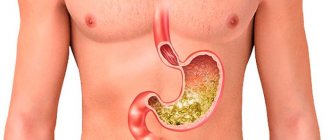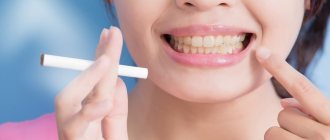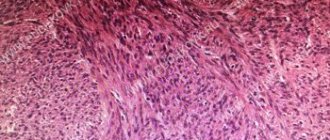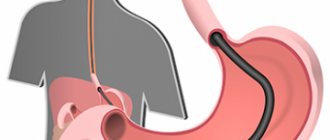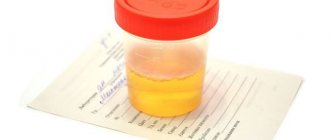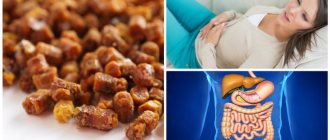Bad breath is a common problem that affects approximately one in three people. There is a medical term for bad breath - halitosis.
The appearance of an unpleasant odor may be a signal of health problems. In 90% of cases, halitosis is a consequence of poor hygiene or oral infections. Bad breath causes anxiety and embarrassment and makes it difficult to communicate with others, but it can be eliminated if the cause of its occurrence is identified and eliminated.
Causes of bad breath
The main cause of bad breath is the excessive proliferation of pathogenic bacteria in the oral cavity, which during their life processes release volatile gases with a characteristic unpleasant odor: hydrogen sulfide and methyl mercaptan. Plaque on the tongue, pieces of food stuck between teeth or in gum pockets are a consequence of poor hygiene and a breeding ground for microorganisms that spread a foul odor. In most cases, treatment by a dentist helps get rid of halitosis. Other causes of bad breath include:
- food with a persistent pungent odor (garlic, onions, some spices). During the digestion of garlic, volatile sulfur compounds are formed, which enter the blood and are carried throughout the body, ending up in the lungs, larynx and mouth. They become the cause of unpleasant “garlic breath”, which disappears completely only after 72 hours;
- smoking. Tobacco smoke itself has a persistent foul odor; in addition, it can provoke gum disease, which is a common cause of halitosis;
- dry mouth. Saliva is necessary for natural cleansing of the oral cavity. It washes away food particles, preventing them from rotting, and contains antimicrobial substances that inhibit the growth of pathogenic microflora. With xerostomia (a pathological condition characterized by decreased secretion or absence of saliva), the number of bacteria in the mouth increases significantly, which contributes to the development of caries and halitosis. Xerostomia can be caused by taking certain medications (hypotensives, chemotherapy, antiparkinsonian, etc.), as well as uncontrolled diabetes mellitus. Saliva production also naturally decreases during sleep. This leads to an increase in the number of bacteria in the mouth (mainly on the surface and back of the tongue) and the appearance of stale breath in the morning. Drinking alcoholic beverages, coffee and smoking are other causes of bad breath due to dry oral mucosa;
- diseases of the throat and nasopharynx. Bad breath can be caused by purulent plugs in the tonsils due to tonsillitis, bacterial or viral infections of the paranasal sinuses (sinusitis), chronic bronchitis and other diseases of the upper or lower respiratory system;
- diseases of the digestive system (gastritis, reflux), liver, kidneys, diabetes;
- fasting and low carbohydrate diets. They lead to the fact that the body, experiencing a lack of energy obtained from food, begins to burn accumulated fat reserves. When fats are broken down, ketone bodies are formed. These are by-products of fat metabolism, which are excreted from the body by the lungs and have an acetone odor.
Diagnostics
With the problem of bad breath, patients usually turn to a dentist or gastroenterologist. The doctor conducts a diagnostic complex according to his profile, and, if necessary, prescribes consultations with related specialists. To detect many dental diseases, a visual examination of the oral cavity is sufficient. For halitosis, the following laboratory and instrumental methods are used:
- ENT examination.
Standard examinations are performed - anterior and posterior rhinoscopy, pharyngoscopy, indirect laryngoscopy. During the examination, the doctor takes a swab from the throat and nose for analysis. If there are changes in the tonsils, it is necessary to carry out bacteriological culture of the plaque. - X-ray examination.
An orthopantomogram is recommended for dental diseases to assess the extent of the process. X-ray examination of the gastrointestinal tract with contrast is informative in the diagnosis of ulcers, diverticula, and neoplasms. X-ray of the paranasal sinuses is a method of confirming sinusitis. - Endoscopic methods
. EGD is used for suspected chronic gastritis. Upon examination, hyperemia of the gastric mucosa, the presence of erosions, and impaired tone of the cardiac and pyloric sphincter are determined. Bronchoscopy is necessary to confirm bronchiectasis. - Analyzes
. A hemogram is prescribed to quickly identify signs of an inflammatory process. A biochemical blood test can detect dysproteinemia, increased creatinine and urea levels, and cytolysis syndrome. When assessing coprograms, attention is paid to the amount of neutral fats and undigested muscle fibers.
What causes sour breath?
The most common cause of sour breath is acid reflux. This is a pathology of the gastrointestinal tract, accompanied by heartburn, pain in the lower abdomen, and less commonly, belching. Symptoms of acid reflux occurring more than twice a week are already characterized as gastroesophageal reflux disease (GERD) and must be treated. The main cause of reflux is a weakening of the lower esophageal sphincter, a valve-like muscle that forms a barrier between the esophagus and the stomach. Normally, the sphincter opens when swallowing food and then closes tightly. With reflux, it remains open, allowing gastric juice mixed with bile and pieces of undigested food to flow back into the esophagus. This causes heartburn, a bitter or sour taste in the mouth, and bad breath that gets worse with belching.
In some cases, a person with GERD may feel their own bad breath without even opening their mouth. The sharp sulfuric acid smell of bile from the esophagus can even be heard through the nose. Less commonly, sour breath can be a symptom of peptic ulcer of the stomach and duodenum, accompanied by increased acidity of gastric juice.
Bad breath due to gastrointestinal diseases
Bad breath in some cases can be a consequence of gastroenterological diseases. Most often, halitosis is provoked by gastroesophageal reflux (a pathological condition in which gastric contents enter the esophagus), as well as infection of the mucous membrane of the stomach and duodenum by the bacterium Helicobacter pylori. It can cause gastritis, ulcers and stomach cancer. In addition, the bacterium may also be present on the oral mucosa, which is also a cause of halitosis. There may not be any signs of gastrointestinal diseases.
The study, published in the journal Medical Principles and Practice, involved 18 patients with halitosis and confirmed H. pylori infection. 4–6 weeks after a course of antibacterial treatment, bad breath disappeared in 16 people. This study confirmed the relationship between Helicobacter pylori and halitosis.
Much less commonly, halitosis occurs due to intestinal obstruction. This is a health-threatening condition where food is unable to move through the digestive tract due to a blockage in the small or large intestine. Symptoms of the pathology: bloating, constipation, abdominal cramps, nausea, vomiting and fecal odor from the mouth. If you have these symptoms, you should immediately consult a doctor.
Cirrhosis of the liver
The appearance of connective tissue nodes in the liver tissue is accompanied by dysfunction of the organ and the appearance of clinical signs of the disease. The cause of cirrhosis in most cases is alcohol abuse and infectious hepatitis. In addition, among the predisposing factors it is worth highlighting:
- autoimmune hepatitis;
- Slerosing cholangitis;
- bile stagnation;
- narrowing of the bile ducts;
- metabolic pathology (cystic fibrosis);
- Wilson's disease;
- taking hepatotoxic drugs;
- surgical interventions on the intestines;
- parasitic infection of the digestive tract.
If the cause of cirrhosis has not been established, it is usually called cryptogenic. Cirrhotic changes occur against the background of impaired cell nutrition, which is accompanied by the proliferation of connective tissue. The formed nodules compress the blood vessels, which further impairs tissue trophism.
Disorder of blood flow leads to overflow of the veins of the esophagus and anterior abdominal wall, due to which they are subject to varicose veins and lose physiological functions.
Clinical picture
The severity of symptoms depends on the cause of the disease, the activity of the pathological process and concomitant pathology. In 20% of cases, there is an asymptomatic course at the initial stage. A person may occasionally indicate flatulence or slight fatigue.
As the disease progresses, heaviness and pain appear in the right hypochondrium. The pain intensifies with alcohol abuse and fatty foods. Subsequently added:
- skin itching;
- helitosis;
- low-grade fever;
- icteric syndrome;
- signs of portal hypertension (ascites, dilatation of the esophageal veins, edema of the lower extremities);
- deformation of the nail plate;
- thickening of the phalanges;
- "spider veins";
- weight loss;
- gynecomastia (enlarged mammary glands);
- testicular atrophy.
Severe complications include:
- liver failure, resulting in brain dysfunction (hepatic coma), as well as neurological symptoms;
- portal hypertension;
- massive bleeding from varicose veins;
- infection;
- malignant tissue degeneration (hepatocellular carcinoma);
- renal failure.
Diagnostic methods
Liver disease requires a comprehensive diagnosis, which includes analysis of anamnestic data, an objective examination, laboratory and instrumental examination. Depending on the stage of the pathological process, palpation may reveal reduced liver size or, conversely, hepatomegaly. Particular attention should be paid to palpating the spleen, which may also be enlarged.
Laboratory diagnostics:
in a clinical blood test - a decrease in the level of platelets, leukocytes, hemoglobin;- in the coagulogram - signs of hypocoagulation, decreased prothrombin index;
- in biochemistry - increased transaminases, alkaline phosphatase, bilirubin, urea, creatinine, insufficient albumin;
- tests for infectious hepatitis are carried out;
- alpha-fetoprotein is being studied.
Instrumental methods include:
- ultrasound diagnostics, which allows you to identify pathology and assess its severity. The doctor determines the degree of hypertension, analyzes the condition of the spleen;
- computer, magnetic resonance imaging - make it possible to examine in detail the pathological focus, vascular network, bile ducts;
- Dopplerometry of blood vessels;
- liver biopsy - necessary to assess tissue morphology and identify the cause of the pathology;
Treatment tactics
The goals of therapy include suppressing the progression of the pathological process, compensating for dysfunction, reducing the load on the veins of the esophagus, stabilizing the patient’s general condition and preventing complications.
For this purpose, dietary nutrition is prescribed. It provides:
- fractional frequent meals;
- exclusion of fatty, spicy, fried foods;
- limiting fats and carbohydrates;
- consumption of fresh vegetables and fruits;
- strict control of salt intake;
- giving up alcohol.
If there is a risk of developing encephalopathy, protein foods should be limited. In case of edema and ascites, it is recommended to avoid salt. Don't forget about dosed physical activity. This could be swimming, physical therapy.
The doctor monitors the intake of medications that have a hepatotoxic effect on the liver. Restrictions also apply to biologically active substances and medicinal herbs.
As for drug therapy, it includes hepatoprotectors, enzymes, enteroseptics, antiviral, and steroid drugs. In cases of severe ascites, laparocentesis is performed to remove fluid from the abdominal cavity. In severe cases, liver transplantation is considered.
Prevention
To prevent liver disease, it is recommended:
- control alcohol consumption;
- diagnose hepatitis in a timely manner;
- normalize nutrition;
- avoid heavy physical work and stress;
- strictly adhere to the dose and duration of the therapeutic course of hepatotoxic drugs.
Cirrhosis is an incurable pathology, however, if the provoking factor is excluded and effective therapy, the prognosis is relatively favorable.
How to remove bad breath from reflux?
Medication treatment, as well as making some changes to your usual lifestyle, can help prevent sour breath from developing with GERD. First of all, you need to stop smoking. Nicotine causes the sphincter muscles in the lower esophagus to weaken, which is the main cause of stomach acid refluxing into the esophagus. In addition, smoking itself causes bad breath and increases the risk of developing cancers of the throat, esophagus, stomach, pancreas, liver and colon. How to prevent bad breath from reflux:
- do not lie down immediately after eating - in a horizontal position, gastric juice flows into the esophagus, and the longer it stays there, the more irritated its mucous membrane is. You must wait at least 2–3 hours;
- Place a wedge-shaped pillow under your head to elevate your upper body while you sleep. This way the esophagus will be located above the stomach and gastric juice will not flow back and irritate its walls;
- eat small meals throughout the day;
- Maintain a normal weight to avoid pressure on the stomach. Obesity increases the risk of hiatal hernia, which can worsen GERD symptoms;
- Chew gum to freshen your breath and reduce the risk of heartburn.
Changing your diet can also relieve symptoms of GERD and prevent bad breath. Many foods can reduce the tone of the sphincter muscles of the lower esophagus and increase the acidity of gastric juice, thereby exacerbating the problem. Foods and drinks to avoid if you have GERD:
- alcohol;
- coffee and tea containing caffeine;
- onion and garlic;
- citrus fruits and juices from them;
- carbonated drinks;
- tomato juice;
- mint;
- spicy food;
- chocolate;
- fatty and fried foods.
Include more fiber-rich foods in your diet. These are pears, apples, avocados, artichokes, lentils, beans, broccoli, bananas, carrots and beets. They help improve digestion and avoid halitosis. Consume natural sourdough yogurt without fillers and milk, and drink enough water. Drug therapy for GERD involves the use of several types of drugs that reduce the production of hydrochloric acid or neutralize it:
- histamine blockers;
- proton pump inhibitors;
- calcium carbonate, aluminum or magnesium hydroxide.
Only a doctor can prescribe medications. Self-medication can be harmful to health.
How to eliminate unpleasant odor from the stomach?
The first step in dealing with bad odor caused by stomach problems should be to determine its true cause. To do this, you need to make an appointment with a gastroenterologist, since attempts at self-medication can harm your health. After examining the gastrointestinal tract, the doctor will prescribe a treatment regimen that will help solve the problem of bad breath. Taking probiotics (beneficial microbial cultures that improve the functioning of the digestive system) also helps normalize the acid balance of the stomach and reduce the number of pathogenic bacteria.
Symptoms of the problem
Sometimes the problem is only in the person's mind. There are several types of problems:
- true halitosis – when an unpleasant odor is noticeable to others;
- pseudohalitosis – the problem is felt when communicating at close range;
- halitophobia – no problem.
How to prevent crown odor
In order to get rid of pseudohalitosis, it is enough to observe daily hygiene procedures and use special mouth rinses.
True halitosis with fecal odor is additionally accompanied by the following symptoms:
- intestinal obstruction;
- constipation;
- disruption of intestinal function;
- loss .
How to remove the smell of acetone from your mouth?
The smell of acetone on the breath usually appears when the body switches to the mode of burning accumulated fat due to the lack of carbohydrates from food to support all vital processes. This is a common side effect of low-carb or keto diets, but it is not harmful to your health. Breath with the smell of acetone or rotten apples disappears on its own a couple of weeks or a month after starting the diet, when the body fully adapts to the transition to a new source of energy.
In other cases, a sweetish fruity odor from the mouth may be a sign of an acute complication of type 1 diabetes - ketoacidosis. This dangerous health condition is caused by high levels of ketone bodies in the blood due to a lack of insulin. Symptoms of ketoacidosis:
- strong thirst;
- frequent urination;
- labored breathing;
- stomach ache;
- nausea, vomiting;
- confusion.
If these signs are present, you should urgently call an ambulance, since without timely treatment the patient may fall into a diabetic coma and die. Regular monitoring of blood sugar levels will help prevent the development of ketoacidosis in the future.
The following tips will help minimize keto breath while dieting:
- increase your water consumption. Ketones are excreted not only by the lungs, but also in the urine. Dehydration increases their concentration in the body and increases the unpleasant odor;
- eat less protein. When it breaks down, ammonia compounds are formed - another metabolic byproduct with a strong, unpleasant odor, which is excreted through the lungs and urine;
- Maintain oral hygiene: brush your teeth twice a day, use dental floss and mouthwash;
- Sugar-free mints or chewing gum will help freshen breath and increase the production of saliva, which has an antimicrobial effect and neutralizes bad odors;
- increase your daily carbohydrate intake.
Prevention
The best prevention of halitosis is following all the rules of hygiene: choosing the right brush and toothpaste, brushing your teeth and tongue twice a day, using floss and rinses, and regular visits to the dentist. In addition to these procedures, it is important to ensure that the diet is balanced and the intake of fluid into the body is sufficient.
What to do if your breath stinks?
The fight against bad breath should begin with a visit to the dentist, since most often halitosis is a consequence of poor oral hygiene and the resulting diseases of the gums and teeth. If the doctor does not find any problems, then the cause probably lies in gastrointestinal diseases, and you need to visit a gastroenterologist. Following these recommendations will help get rid of halitosis:
- Brush your teeth thoroughly at least twice a day (especially after meals), using a toothpaste containing fluoride, as it helps strengthen the enamel. Using a toothpaste or mouthwash with antibacterial ingredients kills bacteria in the mouth that causes bad odor;
- floss at least once a day to remove food particles stuck between your teeth;
- clean the surface of your tongue daily with a special scraper or toothbrush to remove plaque, which is a breeding ground for pathogenic bacteria;
- Clean your removable dentures regularly (at least once a day or as directed by your dentist);
- avoid dry mouth - drink more clean water, chew sugar-free gum to stimulate saliva production;
- Avoid consuming garlic, onions, hot spices, alcohol and coffee. Limit your sugar intake - it promotes the growth of microbes, which turn it into acid, which destroys tooth enamel;
- change your toothbrush every three months;
- Get a routine check-up with your dentist every six months.
Traditional methods
Cabbage juice will help cure gastritis.
You can use traditional methods, which are quite effective. But when using them, it is important to follow the dosage recommendations.
An important factor is also that any medicinal plant has its contraindications.
For these procedures to be beneficial, you need to study information about the medicinal plant. If the disease is gastritis, you can use the following methods:
